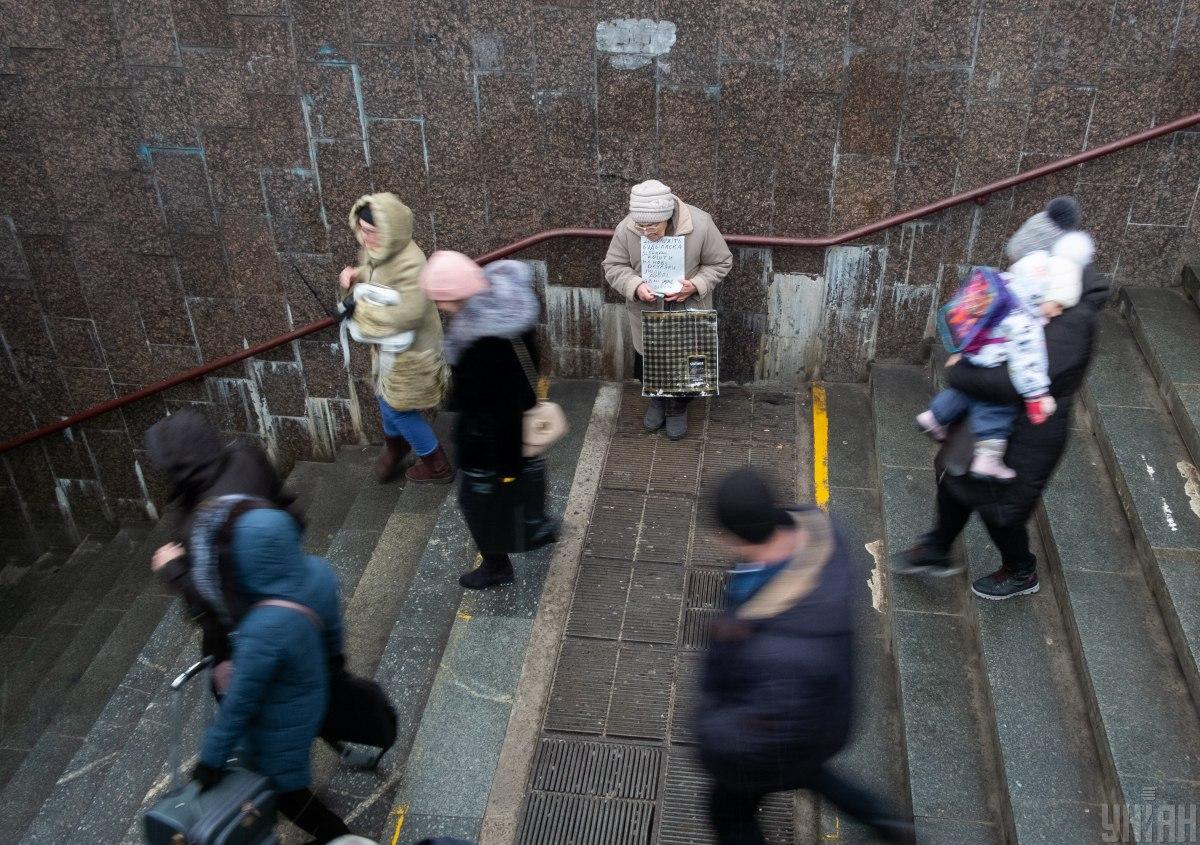
Population count in Ukraine, explained
The government has published an estimate of Ukraine's population. It was not a standard census, but rather an "electronic" one. The count says the population stands at 37 million. It's 15 million down from the previous figure. What do these numbers mean and will the Cabinet of Ministers change economic plans due to population decline?
The government released data on the population of Ukraine as of December 1, 2019. It's 37,289,000 people, excluding the annexed Crimea and the occupied territories of Donbas. Thus, over 28 years of independence, it's 15 million down. In 1991, there were more than 52 million of us. The current "census" is the second one. The first one was held in 2001 when 48.457 million people lived in the country.
Presenting the calculations, Minister of the Cabinet of Ministers Dmytro Dubilet reported on some more data. So, 3.7 million people live in Kyiv, of the total population of the country 15% are children, about 10% are people of early working age, 44% are of primary working age, 14% are of mature working age, and over 65 years old there's 6 million people.
The current population estimate was counted in a non-standard, "electronic" way. Three mechanisms were used. But, according to Dubilet, "the maximum margin was 2.86% ... In order to make effective management decisions, greater accuracy is not needed."
Information was collected as follows: firstly, from databases provided by mobile operators; secondly, with the help of the "Christmas tree" principle –distribution by sex and age, for which the data of the State Statistics Committee, the Pension Fund and electronic registers were used, then they were extrapolated through age and sex; thirdly, the data of the State Register of individuals – tax payers were counted. But the work did not end there.
"We will work further in order to distribute this information among individual settlements. Next, we want to obtain the age and sex distribution of the population in certain regions, in individual settlements, and districts. Further we will get information on incomes," Dubilet said about the future plans of the government.
In addition, he said, within one to two years it is planned to launch a single register of Ukrainians, which will be verified.

Dubilet does not see the need for an official census: "The census, if we conduct it (we will still have discussions on this issue), will cost the state about UAH 3-4 billion. And, if we did this, we would get the result next year."
The Minister is convinced that, as such, the census "will not be effective" for the state. "I will prove to other representatives of the authorities that, probably, we will not go this way," he concluded.
The actions of the government are quite consistent. At the end of November 2019, Dubilet said that the census was scheduled for late 2020, almost 100,000 interviewers with tablets were supposed to go do to door. UAH 3.4 billion was provided from the state budget. But even then, he said that conducting a census in this format is an "inadmissible luxury" for Ukraine, and therefore it was decided to conduct an "electronic" census to save UAH2-3 billion. And that's what's been done.
According to international economic rules, a census plays an important role in the development of socio-economic policies of the state. It is held in almost all countries as part of the World Population and Housing Census Program, implemented in accordance with the decisions of the United Nations Economic and Social Council.
The UN recommends conducting universal censuses at least once every 10 years. With such frequency they are carried out in the USA, Great Britain, China, Germany, and France. In Canada, Japan, Australia, and New Zealand, censuses are held every five years. Based on the data obtained, social programs are formed, long-term plans are drawn up for the construction of clinics, kindergartens, the volume of housing stock and other infrastructure, and the creation of jobs. In general, the matter is important.
The census has finally been held, although in a non-standard format. Can the figures received by the government be trusted and what do they mean for the future of Ukraine?
New calculations and estimates

The first thing that experts say is that, taking into account the government estimate, gross domestic product per capita has grown in the range of $500-$1,000.
"It's $4,200. This is the actual GDP per capita for 2019. Not $3,700, as some economists thought. Plus $500 from the remote census," says Dmytro Boyarchuk, director of Case Ukraine analytical group.
Coordinator with the expert platform of the National Bank, Andriy Blinov, estimated the growth of the indicator at $1,000, taking into account the population and the effect of hryvnia strengthening.
"After revaluing and specifying the population numbers, Ukraine’s nominal GDP per capita jumped from about $3,100 in 2018 to about $4,100 in 2019," the expert notes.
A number of experts believe that the announced data can serve as a basis for reviewing plenty of projects, especially in the social sphere, as well as plans to create new jobs. And now there is reason to reduce the number of people's deputies, which the pro-presidential party Servant of the People has proposed to do even earlier. The current number of parliamentarians, 450, was established based on the fact that the population of Ukraine is more than 50 million.
But there are other opinions. Economic expert Oleh Pendzin doubts the reliability of the figures, and as for the possible government plans in view of the census, they do not need to be detailed as economic problems have long been known. This is what we need to address.
"Final reliable census figures are provided only by the census according to Eurostat norms. What we have done is informal statistical study. The second question – the assessment coincided with our expectations. We made an alternative calculation for the consumption of a number of food products, for example, of sugar. It turned out that the population is about 36 million. But we still need to be aware of the volume of illegal labor migration. What can change in government plans? Everyone speaks of the need to restore Ukrainian industry. What data may be missing here?" the expert noted.
Economist Oleksiy Kushch also doubts the correctness of the government assessment.

"There are doubts about the very figure, 37 million. It is conditional and raises more questions than it answers. It is not clear how it is calculated and in what analytical studies it can be used in. The methodology of this census is adapted to the collection of information from mobile operators, therefore, the study cannot be applied either in international ratings or in international calculations that would characterize Ukraine. For example, the simplest discrepancies: according to the State Statistics Service, in 2013, approximately 45 million people lived in Ukraine. We take the natural population decline or the so-called natural population movement – the difference between fertility and mortality: in 2013, deaths exceeded the birth rate by 160,000, in recent years this indicator has increased to 250,000, not only due to mortality, but against the background of declining birth rates. Over the past five years, Ukraine has lost approximately one million two hundred - one million three hundred thousand people in natural movement alone. Ukraine lost another two million due to the annexation of Crimea and about four million as a result of the occupation of part of Donetsk and Luhansk regions. According to the statistics of the so-called DPR and LPR, in the first there are two million three hundred thousand of the implicit population, in the second – one million seven hundred thousand. The total loss can be estimated at approximately seven million three hundred thousand people. We subtract this amount from 45 million and get something below 38 million. And this is without taking into account labor migration, which today amounts to several million people. It turns out that the figures of the Cabinet, in comparison with the proposed expert method, are incorrect. In fact, according to our calculation, provided that not a single person left Ukraine for work on an ongoing basis, there should be much fewer than 37 million people. And this is despite the fact that the stats agency's figures are correct. Most likely, they were overestimated. We can talk about 35 million now, at best," the expert explained.

As for the statements about the lack of the need for a standard population census, Oleksiy Kushch notes that this census would give a huge amount of information in terms of the economic, social, cultural, linguistic, and ethnic status of the population.
"It would also have shown a natural decline in population. Unfortunately, neither the previous nor the incumbent authorities are ready to show a true story, and this is a big problem. The state is interested in the truth if it plans to implement an effective, balanced socio-economic policy. If you look at any macroeconomic models that imply the development of the country, they have two main components – production factors: on the one hand, these are capital investments, fixed assets, including material resources, on the other hand, there's human capital. To assess the latter, as well as the overall development of the economy, it is necessary to see the structure of human capital in terms of education, skills, etc. At least you need to understand the exact population numbers. The figure, which was published by the Cabinet, has not yet given an answer to any of those questions. So it turns out that the government is not able to form effective economic parametric models on the basis of which economic development can be predicted. And the reluctance to find out the truth suggests that the government, by and large, is not going to develop such models, moving like a log along the river stream. Their model is only the speed of the current and the direction of this current. Therefore, all the assurances by Oleksiy Honcharuk about the growth rate of 40% over five years are unfounded, such a result can be achieved only with high-quality modeling of economic processes in the country," said Kushch.

In his opinion, on the basis of new data reducing the population to 37 million, Ukraine will not grow in any international ratings. The only indicator that can improve is gross domestic product per capita. It will grow by about 15%. But it will increase within the bottom basket of economies.
"There are the poorer countries where the per capita GDP is in the range of $5,000 per year, dynamically developing countries – from $5,000 to $10,000, and there's a pool of developed economies and "bordering" countries, for example, Turkey, with that starting from $10,000. We had $3,500, and now it will be $4,000 or so. Therefore, no major improvement in ratings is expected. Moreover, our government, with the strengthening of the hryvnia, came up with a unique way to increase GDP – in 2019, the currency equivalent of the gross product grew by strengthening the hryvnia by 15% plus a deflator, which was at a level of 10% to 15%, so here is a GDP growth of 30% in dollar terms. It's all thanks to only monetary manipulations that cannot be stable in the long run," the expert noted.
As for the new jobs, in his opinion, we did not have this problem no matter the census since the problem is not about the number of jobs, but labor poverty. In Ukraine it is easy to find work for UAH 4,000-5,000, but the problem is to get by with this money and feed the family.
"I believe that the government should have the main task – instead of creating new jobs, they must overcome labor poverty. This can be done by creating mechanisms to increase the welfare of Ukrainians," said Kushch.
He also believes that the government should now work on the inclusiveness of GDP, as the gross product is distributed among the main social groups.

"GDP may grow both per capita and in dollar terms, but the population will not notice this if redistribution occurs in favor of certain financial and industrial groups and creditors. This is what the Ukrainian authorities need to think about, rather than artificially raising GDP and population stats using manipulative, purely mechanical tools," summed up Kushch.
Anyway, the figure of 37 million suggests that Ukraine is increasingly falling into the demographic hole. And this is a threat to the survival of the state as such. This is what the authorities must address.
Nana Chornaya

